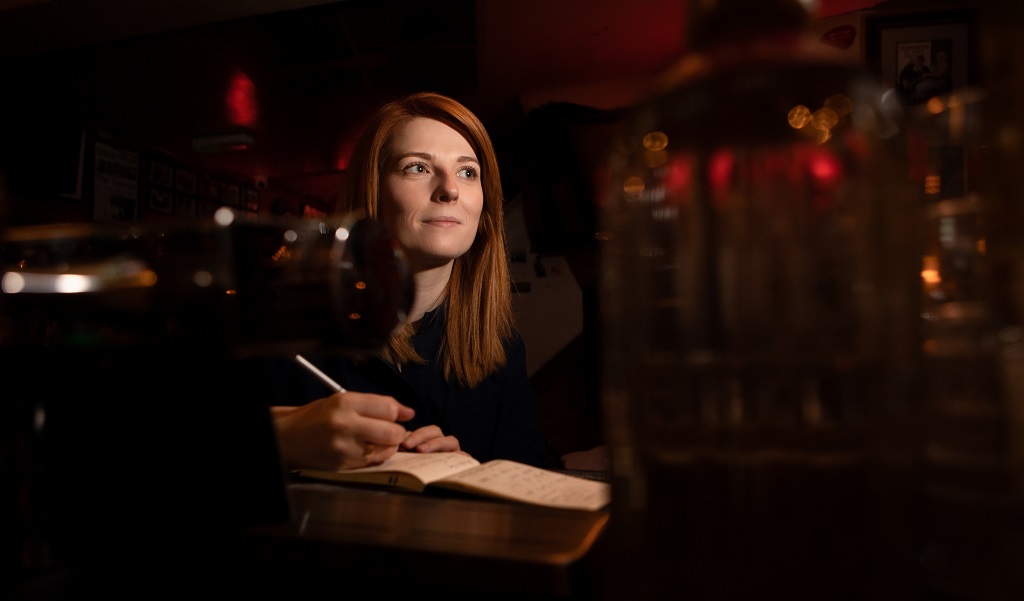
1917’s Scots screenwriter to give a talk in Glasgow
An Oscar-nominated Glasgow screenwriter with Hollywood at her feet is returning to her roots.
Royal Conservatoire of Scotland (RCS) graduate Krysty Wilson-Cairns is one of the most-talked about new voices in film … and her star is rapidly on the rise.
She’s behind box office smash 1917, the stunning World War One war epic, which she co-wrote with director Sam Mendes. The film has triumphed during awards season, scooping seven BAFTAs, two Golden Globes and three Oscars – and earning Krysty her first Oscar nomination in the Original Screenplay category.
Now, Krysty’s own story will take the spotlight when she returns to her Royal Conservatoire roots to share the secrets of her screen success.
In an exclusive event for RCS students and staff on Monday, April 20, Krysty will reunite with her former tutor, Film lecturer Dr Andy Dougan, for a Creative Conversation and audience Q&A.
Krysty, who grew up in Shawlands, said: ‘RCS didn’t just prepare me for my career, it opened my eyes and showed me what my career could be.
‘It gave me my career — I had no idea I wanted to, or in fact even could, be a screenwriter before I was set that first writing task for the class. That was the ‘eureka’ moment.’
Krysty graduated from the Digital Film and Television programme at RCS in 2009, now the BA Filmmaking degree. As well as 1917, this year will also see Last Night in Soho hit the big screen, which she co-wrote with acclaimed director Edgar Wright.
Professor Jeffrey Sharkey, principal of the Royal Conservatoire of Scotland, said: ‘Krysty is a gifted storyteller whose work has captivated viewers across the world.

RCS graduate Krysty Wilson-Cairns in the Toucan bar in Soho where she wrote her first script (Photo: Robert McFadzean / RCS)
‘To be nominated for an Oscar for your first feature film is the stuff of dreams and she is proof that talent and dedication to your craft can take you far – all the way from Glasgow to Hollywood. To have Krysty return to her RCS roots to share her inspirational story with the next generation of artists is a real gift and we can’t wait to welcome her back.’
Krysty’s Creative Conversation is part of a dazzling Tinseltown trio at RCS. The curtain will rise on musical City of Angels, from March 14, set in 1940s Los Angeles against a backdrop of old Hollywood glamour and true crime tales.
In April, Hollywood history will be unveiled at RCS when six original backdrops from the Metro-Goldwyn-Mayer (MGM) film studio go on public display for the first time in the UK. The hand-painted pieces from Hollywood’s golden age will be showcased in a special event, which is free, on Wednesday, April 15 in the New Athenaeum Theatre.
The backdrops were created between 1938 and 1952 for films Marie Antoinette, Madame Curie, The Skipper Surprised His Wife, The Light Touch and Washington Story. They will take a starring role in The Lost Art of Hollywood, hosted by Scenic Art lecturer Gary Fry, and Film lecturer Dr Andy Dougan, who will reveal how they were created and used on the big screen.
They are among more than 200 backdrops saved by the Art Directors Guild Backdrop Recovery Project to preserve the legacy of Hollywood’s motion picture scenic arts. They will now be used as a teaching tool for aspiring scenic artists on the Royal Conservatoire’s three-year Production Arts and Design degree programme.
The event will also honour the Scot who was at the helm of the MGM scenic art studio, Edinburgh-born artist George Gibson, who emigrated to the United States in 1930.
Gary Fry said: ‘The reason I approached the Backdrop Recovery Project was because of George.
‘George studied at The Glasgow School of Art and was a scenic apprentice at the Theatre Royal in Glasgow – both right on the doorstep of the RCS – before he moved to California. His first film as the head of the scenic studio was The Wizard of Oz in 1939 and other major credits include An American in Paris (1951) and Brigadoon (1954). By honouring his legacy, and celebrating his talent, we get to share these incredible pieces of scenic art history with audiences.’
Tickets for City of Angels and The Lost Art of Hollywood are available from rcs.ac.uk/boxoffice.
Click HERE to read more culture news and features from Scottish Field
TAGS

